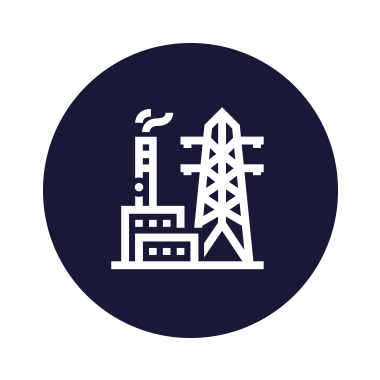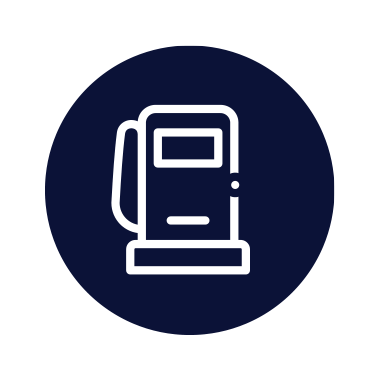Building Resilient Operations
People may be breathing a sigh of relief as power has slowly been restored in Texas, but it would be foolish for anyone to be lulled into a false sense of security. While this crisis may be ending, similar incidents can happen anywhere, not just in Texas, and not just because of what some may consider a once-in-a-decade weather event. The fact is the United States’ aging electricity infrastructure is not sufficiently managed for risk, either from a severe weather or operational perspective.

Can a repeat of the crisis in Texas be avoided? Yes, by building resilient operations
The unfortunate truth is our electricity infrastructure is significantly vulnerable, and many electric utilities find themselves largely reacting to extreme weather or operational failures. Instead, by anticipating vulnerabilities throughout the value chain and building resilience into the electric grid now, utilities can begin to take some control over these unpredictable developments and avoid repeating negative outcomes of an outage to ratepayers, the community, and the environment. This will not only enable utilities to maintain continuity of operations when an unexpected event does occur, it will improve the agility with which they respond to an event and minimize the impacts on the company and its customers.
Like it or not, we are experiencing more severe weather events that threaten the continuity of various energy supplies. Texas has had its fair share.
"By anticipating vulnerabilities throughout the value chain and building resilience into the electric grid now, utilities can begin to take some control over these unpredictable developments and avoid repeating negative outcomes of an outage."
Effects of the 2021 Texas Cold Snap
The recent severe cold snap did more than leave millions of customers without electricity, it also shuttered oil wells and refineries, taking more than 1 million barrels per day in oil production offline and sending gas prices soaring. And the impacts of Hurricane Harvey should still be fresh in people’s minds. When this mega-storm made landfall it forced one quarter of America’s entire fuel refining capacity to shut down and gasoline prices soared by roughly 30 cents per gallon as it dropped more than 24 trillion gallons of water on the Texas-Louisiana area.
 |
25%of US fuel refining capacity shutdown |
 |
Gasoline prices up by around |
Impacts from unpredictable severe weather can be significant, but there are numerous more immediate challenges with associated unknown risks that add heightened complexity to successful electricity management and the stable delivery of power to customers.
From an operational perspective, these challenges include a national electricity grid that has aged significantly and far outlived its life expectancy. Most electric transmission and distribution lines now in operation were constructed in the 1950s and 1960s with a 50-year lifespan, and some lines still in use today were built in the 1880s.
Aging Infrastructure
Not surprisingly, an analysis by the American Society of Civil Engineers found there were 3,571 total power outages in 2015 alone. Likewise, nine out of 10 (88 percent) coal-fired electric generating plants were built between 1950 and 1990 and many are approaching retirement age, placing even more strain on reliable electricity generation.
Also, public policies can significantly complicate future planning by utilities. Without a national strategy for America’s electricity system, state and regional transmission organizations often go it alone and develop their own solutions, which can prevent them from interconnecting their grids and borrowing power from each other when needed, contributing to more power outages as well as a sharp increase in cost to the consumer. More alarmingly, it also makes it harder to protect against cyber-attacks on the grid, which according to the U.S. Department of Homeland Security are growing in frequency and sophistication. A recent cyber-attack in the U.S. in December is believed to have extended beyond the U.S. government to threaten private systems that control critical infrastructure, including the power grid. And a power outage in October 2021 in Mumbai, India, is suspected to have been the result of a cyber-attack. The outage closed the stock market, shut down trains and affected the daily lives of its 20 million citizens.
"Renewables alone can’t be directly integrated into the grid to provide a reliable supply of ener-gy due to challenges of storing the intermittent energy they produce."
The growing availability of alternative sources of energy and how best to connect them to the grid present other challenges. Renewables provide a clean source of energy and are responsible for roughly 20 percent of electricity generation in the U.S., but that energy is often intermittent (the sun doesn’t always shine, and the wind doesn’t always blow to power solar panels or wind turbines, for example). So, renewables alone can’t be directly integrated into the grid to provide a reliable supply of energy due to challenges of storing the intermittent energy they produce.
Nuclear power meets this need, however, as it operates at a higher capacity (i.e. the amount of time nuclear facilities are online producing energy) than both renewables and fossil fuels, and currently is the only carbon-free energy source that can produce large amounts of electricity. But few new nuclear plants are scheduled for construction, likely due to concerns about its cost, often associated with a lengthy regulatory approval process.
Of course, it can be difficult to anticipate the unknown risks that could arise from many of these challenges but getting into this mindset is essential. Historically, electric utilities have placed an emphasis on compliance with rules and regulations, which is too narrowly focused on reacting to lagging indicators such as unsafe conditions or equipment function failure. While this is important, utilities must also take a broader view and proactively consider leading indicators of current and future vulnerabilities that could threaten their operations and cause service disruptions so they can develop plans now to mitigate the consequences and know where best to allocate riskmanagement resources.
Once leaders begin to think with a proactive risk-management mindset, there are five steps utility companies can take right now to anticipate risk and establish better resiliency and agility in their operations:
| 1 | Utilize an Integrated Risk Management framework to holistically and fully understand all potential risk to your operations and business. The framework should ensure the organization’s processes & technologies are fit-for-purpose; competencies and capabilities are at the right level so that staff understand how to run these processes; employee mindsets and behaviors create a future-looking culture that is agile to respond to disruptions; and governance and management make all the pieces fit together. All of these components are essential to successfully mitigating risk. The framework should focus on building resiliency to unknown challenges and shocks, as well as known long-term issues to the business. |
| 2 | Apply the Framework across the entire value chain to understand the potential risks outside your company that can have consequences on your internal operations and capabilities to provide services. The integrated risk management framework should be used to review all operating inputs and service outputs to identify current and future vulnerabilities to the business. If this consideration can be done in partnership with others across the overall value chain (from generation to transmission and distribution) then by all means do it. |
| 3 | Develop a Business Continuity strategy to be more resilient and agile when an unexpected event occurs. Use any identified deficiencies or concerns that arise through application of the framework to develop a business continuity strategy that closes vulnerability gaps, and if that’s not possible, determine contingency plans for them (such as potential impacts of severe weather). |
| 4 | Establish Response Plans in advance that can be executed to respond to any event. Prioritize risks that need to be urgently addressed in the short term and those that can be addressed in the longer term, and then build response plans for them that are practical and conform to the business continuity strategy. Make sure the response plans are agile so the organization can quickly adjust as necessary (we’re all aware how many companies had to quickly adjust to fewer staff and higher absenteeism once the COVID pandemic began, for example). |
| 5 | Build a Risk-Aware culture in the organization to better prepare all employees to react to the unexpected. The more employees in your company, from executives to facility supervisors to line workers, who are consciously aware of risk day in and day out, the better the company will be able to mitigate and respond to unanticipated incidents and events. It’s essential to develop the appropriate capabilities, mindsets, and behaviors among employees so they are all better prepared for the unexpected and can react quickly and independently. Also essential is engaged leadership who empower all layers of management to adjust to threats in real time. |
Try as we might, it is impossible to eliminate all risks from your operations. And no one can control the weather, of course. The point is to begin anticipating what the many risks facing your company could be, and even if you can’t prevent all of them, you can at least prepare to manage their possible consequences. The result will be resilient operations that could even avoid a repeat of the crisis seen in Texas.

